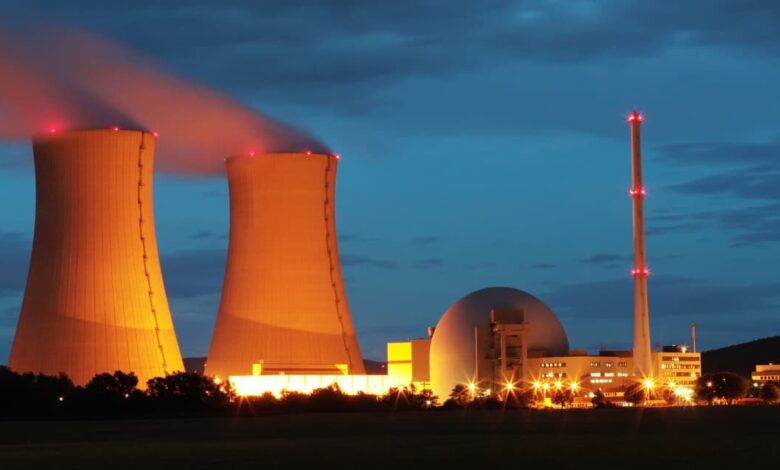The ‘nuclear renaissance’ is upon us. What investors need to know about uranium.

The market for uranium has calmed a bit after seeing prices for the commodity more than quadruple since the start of 2020, but bullish analysts say the nuclear industry continues to “build momentum,” and uranium production will fail to meet demand.
The “nuclear renaissance” comes at a time when it’s become easier than ever to gain exposure to the nuclear sector and as investment options are set to grow, said Jeremie Peloso, editor and strategist at BCA Research.
Weekly spot uranium prices traded as high as $106 a pound as recently as the week ended Feb. 5, trading more than four times higher than the $25 value they saw at the start of 2020 according to data from nuclear-fuel market information and analysis firm UxC.
More recently, prices eased back to $95 as of the week ended Feb. 26, but still trade more than 4% higher year to date.
“The market has been sort of trading sideways as buyers and sellers are looking for signs of direction on the next move,” said Jonathan Hinze, president at UxC.
“While the fundamentals are still very strong with tight supplies facing rising demand, the spot market hasn’t really seen much in the way of new demand over the past month,” he told MarketWatch. “Thus, traders and others looking to place material are having to lower offer prices to entice buyers.”
But “once some of the current spot material clears the market, we could see a renewed upward push in prices — as long as some new demand emerges for near- or midterm delivery,” said Hinze.
“‘The reality is that uranium production and supply is still not keeping up with anticipated future demand, and thus price signals are needed to incent future production.’ ”
“The reality is that uranium production and supply is still not keeping up with anticipated future demand, and thus price signals are needed to incent future production,” he said.
Read: Uranium prices have quadrupled. So why are mining stocks lagging?
Uranium is used as fuel for nuclear power plants and nuclear reactors that produce electricity, and the nuclear industry continues to “build momentum and is, once more, a growth sector,” said BCA Research’s Peloso, in a note released last week.
“Not a single week goes by without a positive development on the nuclear energy front — from additional nuclear reactors planned and lifespan extension of existing ones, to milestones on taxonomy,” he said, with the Declaration to Triple Nuclear Energy signed at the COP28 in Dubai last December standing as one such example. Major countries, including the U.S., pledged to triple nuclear energy capacity globally from 2020 by 2050.
“‘All the momentum in the nuclear industry keeps fueling the bull case for uranium and the actors along the nuclear fuel cycle or those contributing to it.’”
“All the momentum in the nuclear industry keeps fueling the bull case for uranium and the actors along the nuclear fuel cycle or those contributing to it,” said Peloso.
In terms of how to approach uranium investing and how much exposure to take depends on the investment horizon and the mandates of investors, he said. The good news, however, is that it has become “somewhat easier for investors to gain exposure to the sector than it was even a few years ago.”
‘Nuclear renaissance’
Among the different investment vehicles and opportunities available to participate in what Peloso referred to as a “nuclear renaissance” is physical uranium, he said.
“Getting exposure to physical uranium has the best risk-adjusted reward in the nuclear space,” partly because the likelihood of seeing much lower uranium prices is “small, but the upside potential is very high,” said Peloso.
The current supply deficit and rising demand provide a “floor for uranium prices and make it a lower volatility options bet on the nuclear renaissance,” he said.
Still, uranium prices are “fairly sensitive” to geopolitical risks, he said, with countries involved in the uranium supply chain, such as Russia and Kazakhstan, and “tail-risk events” such as the Fukushima Daiichi nuclear power plant disaster in March 2011.
While rare, a Fukushima-type disaster could “potentially ruin the positive momentum that the sector is enjoying right now,” Peloso told MarketWatch.
Uranium investing
Uranium, given its properties and potential uses, is probably the “most regulated element you can think of,” he said, making physical ownership impractical for individual investors.
Instead, investors can gain exposure to the underlying commodity through uranium futures, exchange-traded funds, or publicly-listed companies that invest in the physical metal.
Broadly, ETFs represent an “excellent investment vehicle to gain exposure to uranium or to the nuclear energy theme,” said Peloso.
The Sprott Physical Uranium Trust
CA:U.UT
SRUUF
is a physical uranium trust that buys and holds uranium, and it’s a highly liquid vehicle, he said.
Sprott Uranium Miners
URNM
focuses on uranium miners and physical uranium, while the Global X Uranium ETF
URA
includes companies involved in uranium mining and the production of nuclear components, said Peloso.
He pointed out that there are also roughly 65 publicly-listed uranium miners, made up of three types: explorers, developers, and producers.
“Miners that can bring more supply online and fill the current supply deficit should be massive beneficiaries of the recent jump in demand,” he said, and developers putting new mines into production in the coming cycle will “enjoy big upside as they go from cash consumers to cash producers.”
The most “established and well-known” miners, he said, include Cameco Corp.
CCJ,
which is among the largest uranium producers globally, Uranium Energy Corp.
UEC,
which is involved in exploration, extraction, and processing of uranium, and Denison Mines Corp.
DNN,
a Canada-based exploration and development company.
Given its size, and how “integrated” it is to the nuclear fuel cycle,” there is reason to believe Cameco will come out as one of the main beneficiaries of the nuclear renaissance, said Peloso.
Uranium miners, generally “face less risks than other actors in the industry since there is a deficit of uranium supply,” he said.
Meanwhile, he said that Yellow Cake PLC
YCA,
which specializes in the purchase and storage of uranium oxide, offers exposure to the spot uranium price without the risks attached to exploration, development, or mining, while Uranium Royalty Corp.
UROY,
manages a portfolio of diversified uranium interests, including royalties and streams.
Separately, Constellation Energy Corp.
CEG,
which calls itself America’s largest producer of carbon-free energy, through its mix of nuclear, wind, solar and hydro resources, was among the top stock gainers for the month of February.
Read: This stock is now beating Nvidia’s as the top S&P 500 gainer for February
Outside of gaining exposure to physical uranium or the nuclear fuel cycle, there aren’t many options for investors, said Peloso. Among the few are NuScale Power Corp.
SMR,
which to date is the only company with a small modular reactor design approval from the Nuclear Regulatory Commission, he said.
NuScale shares have seen volatile price moves. The stock took a hit on Nov. 9, falling nearly 33% in a single session after the company and a group of Utah utilities announced the termination of their project to build a small modular nuclear reactor power plant, partly due to the cancellations of two major offshore wind projects and high interest rates.
Shares rose 13% in Monday’s session, bringing NuScale to a year-to-date gain of more than 18% after losing nearly 68% in 2023. It remains down more than 60% from its level a year ago.
“As more investments flow into the [nuclear] industry, more private companies gravitating around nuclear will go public, thus broadening the range of opportunities for investors, and more importantly, diversifying a nuclear portfolio,” Peloso said.
Source link





